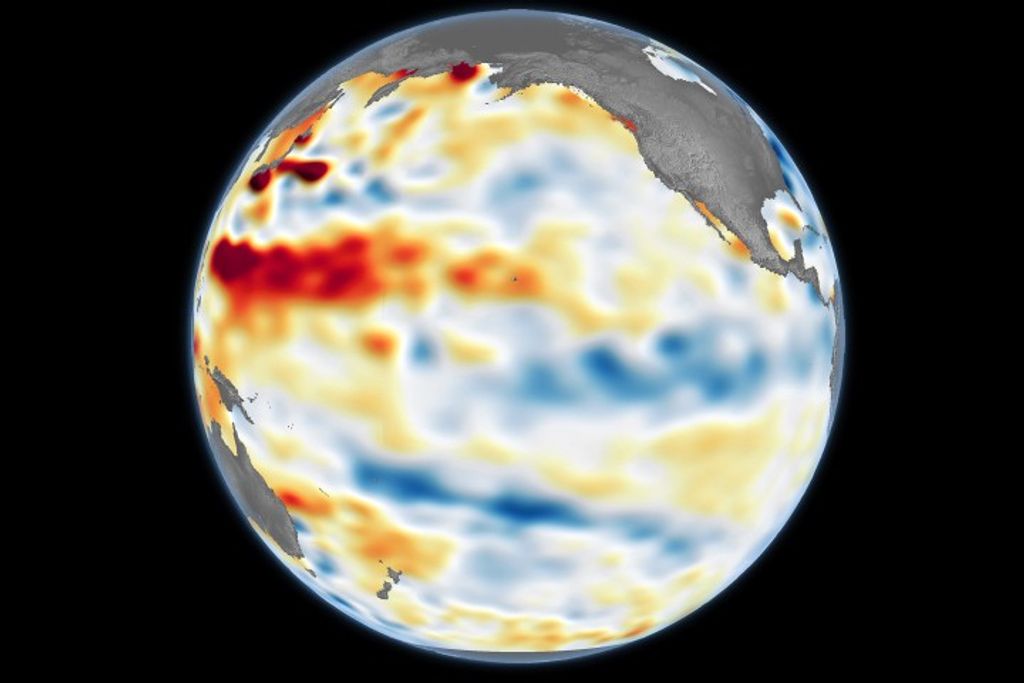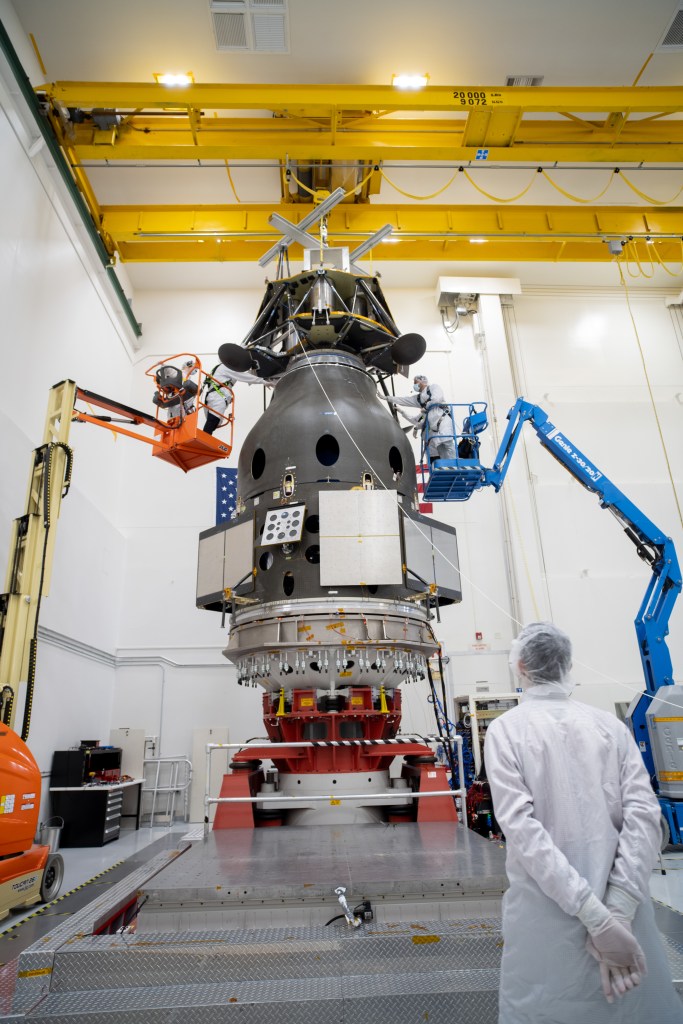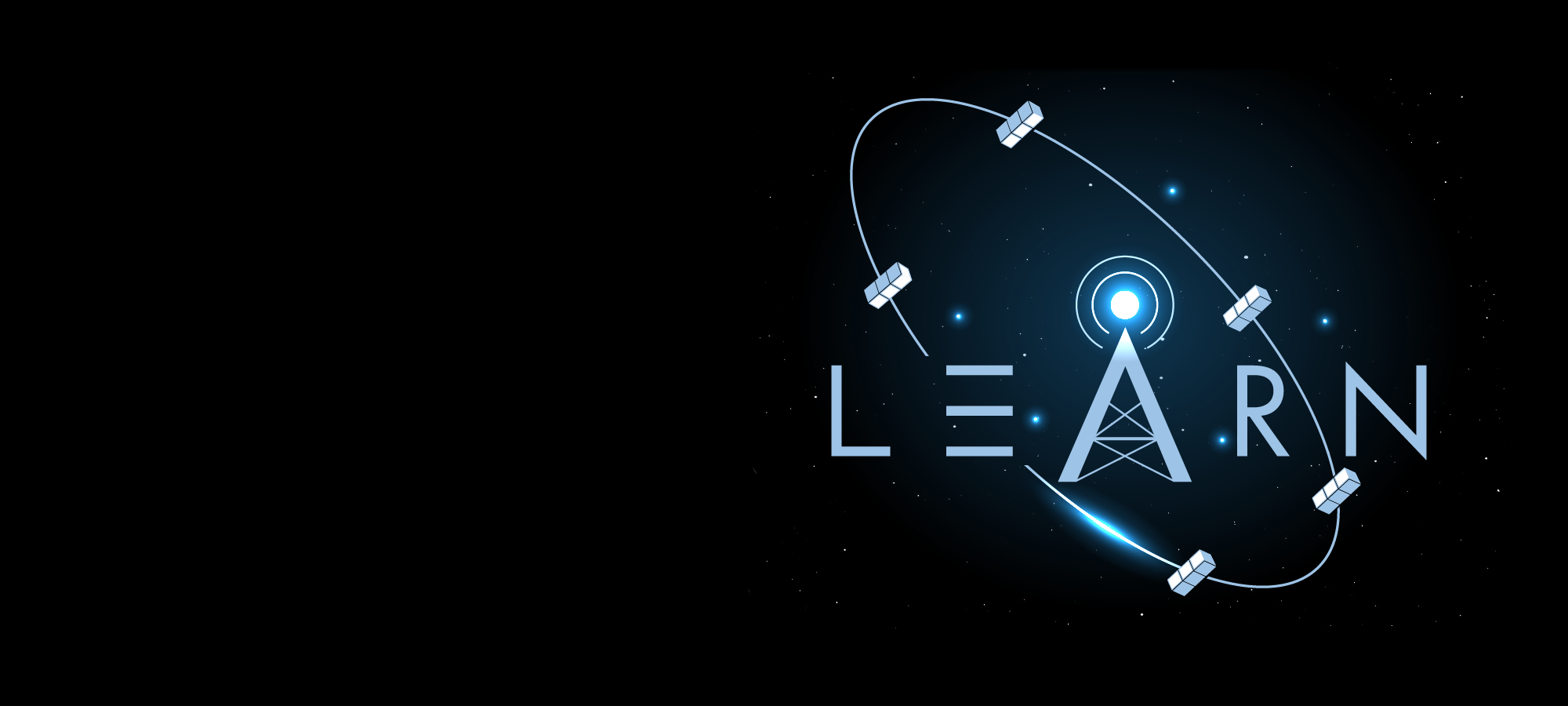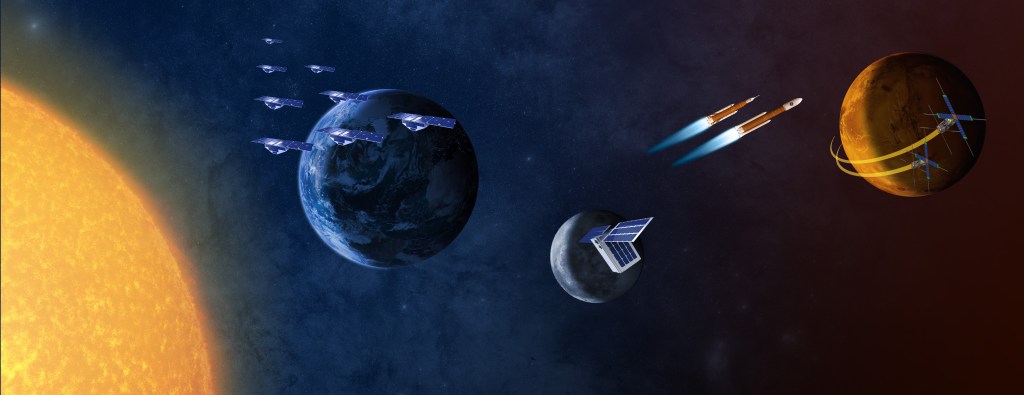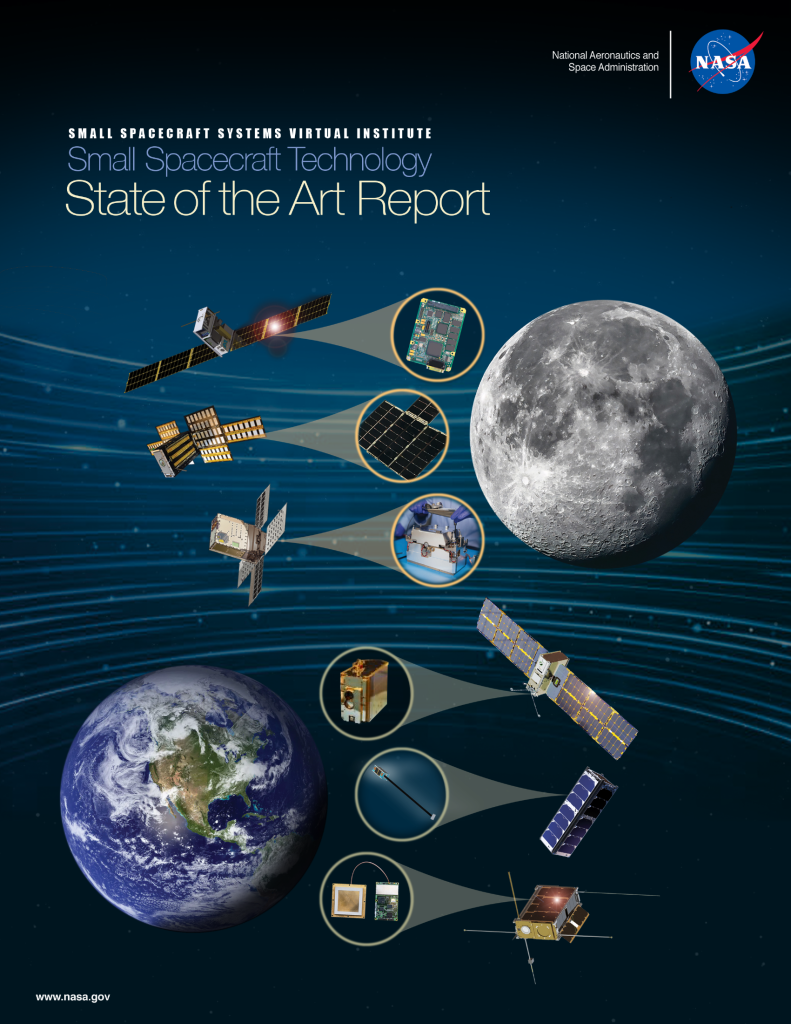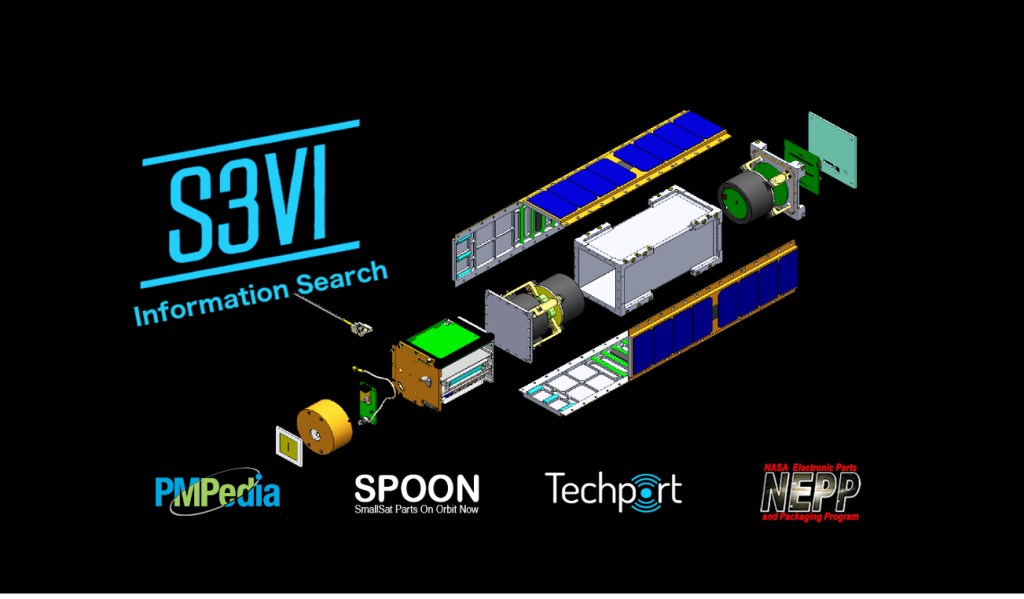2022 NASA SmallSat In-Person LEARN Forum – Speakers
Lucas Anderson
Lucas Anderson is the lead systems engineer and CO-I on the NASA funded (SSTP) Active CryoCubeSat (ACCS), and Active Thermal Architecture (ATA) projects as well as the ESTO Active Cooling for Multi-spectral Earth Sensor (ACMES) flight demonstration. He is also the PI for the Mass Spectrometry of the Turbopause Region (MSTR) technology development. Lucas is currently a research engineer with Orion Space Solutions and the Center for Space Engineering at Utah State University. He has worked on Aerospace research and development with the Space Dynamics Laboratory, Air Force Research Labs, ATK Test Division, and as a consultant with ASTRA Space. He has also worked closely with the Jet Propulsions Laboratory. He has a Bachelors and Masters in Mechanical engineering and is concluding a PhD and post-doctoral position in Electrical engineering.
William Blackwell
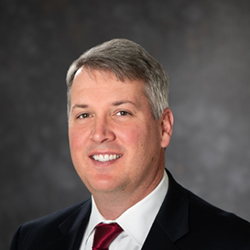 Dr. William J. Blackwell is the Associate Leader of the Applied Space Systems Group at MIT Lincoln Laboratory, where he leads a number of projects involving atmospheric remote sensing, including the development and calibration of airborne and space-borne microwave sensors, the retrieval of geophysical products from remote radiance measurements, and the application of electromagnetic, signal processing, and estimation theory.
Dr. William J. Blackwell is the Associate Leader of the Applied Space Systems Group at MIT Lincoln Laboratory, where he leads a number of projects involving atmospheric remote sensing, including the development and calibration of airborne and space-borne microwave sensors, the retrieval of geophysical products from remote radiance measurements, and the application of electromagnetic, signal processing, and estimation theory.
Dr. Blackwell has served as associate editor of the IEEE Transactions on Geoscience and Remote Sensing and the IEEE Geoscience and Remote Sensing Society (GRSS) Magazine, cochair of the IEEE GRSS Remote Sensing Instruments and Technologies for Small Satellites working group, the NASA Aqua science team, and the National Academy of Sciences Committee on Radio Frequencies. He is currently the principal investigator on the NASA TROPICS Earth Venture mission and the MicroMAS (Micro-sized Microwave Atmospheric Satellite) missions. He was previously the Integrated Program Office sensor scientist for the Advanced Technology Microwave Sounder on the Suomi National Polar Partnership launched by NOAA in 2011 and the Atmospheric Algorithm Development team leader for the National Polar-orbiting Operational Environmental Satellite System (NPOESS) Microwave Imager/Sounder.
Dr. Blackwell received the MIT Lincoln Laboratory Technical Excellence Award in 2019 for his “innovative contributions to the science and practice of environmental monitoring.” He was selected as a 2012 recipient of the IEEE Region 1 Managerial Excellence in an Engineering Organization Award “for outstanding leadership of the multidisciplinary technical team developing innovative future microwave remote sensing systems.” In 2009, he was presented with the NOAA David Johnson Award for his work in neural network geophysical parameter retrievals and microwave calibration and is coauthor of “Neural Networks in Atmospheric Remote Sensing” (Artech House, 2009) and “Microwave Radar and Radiometric Remote Sensing” (Artech House, 2015). Dr. Blackwell has also been an author of more than 180 publications related to atmospheric remote sensing. He is a Fellow of the IEEE and an Associate Fellow of the AIAA.
Dr. Blackwell received the BEE degree in electrical engineering from the Georgia Institute of Technology and the SM and ScD degrees in electrical engineering and computer science from MIT, where he was a National Science Foundation Graduate Research Fellow.
Craig Burkhard
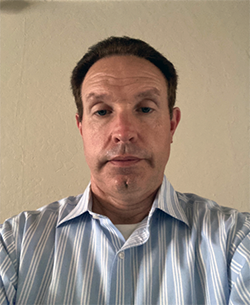 During Craig’s tenure at NASA, he has acquired project management and project technical experience through involvement in small satellite and International Space Station payloads development; concept development and implementation of small satellite databases; and engineering and programmatic analysis of special projects.
During Craig’s tenure at NASA, he has acquired project management and project technical experience through involvement in small satellite and International Space Station payloads development; concept development and implementation of small satellite databases; and engineering and programmatic analysis of special projects.
Craig currently serves as the Deputy Director for the Small Spacecraft Systems Virtual Institute (S3VI) and is responsible in assisting the director in the overall technical and programmatic execution of the institute. He manages activities to federate various small satellite tools, reports, and databases into the S3VI Web Portal. S3VI uses web technologies, databases, and virtual collaboration tools to collect, organize, and disseminate SmallSat knowledge for the benefit of NASA and the entire SmallSat community.
Michael Campola
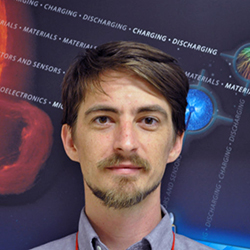 Michael Campola is employed at the Goddard Space Flight Center (GSFC) as the National Aeronautics and Space Administration’s Radiation Effects and Analysis Group (REAG) Leader. Michael received a B.S. degree in Engineering Physics from Embry-Riddle Aeronautical University, and a M.S. degree in Electrical Engineering from Arizona State University. Michael joined the Flight Data Systems and Radiation Effects Branch at NASA GSFC in 2007, working on flight projects and research to capture system level radiation response. He has worked on programs and projects such as Magnetospheric MultiScale (MMS) Mission, Landsat 8, ICESat-2, and Transiting Exoplanet Survey Satellite (TESS), which are currently operational on orbit. He is a member of the Institute for Electrical and Electronics Engineers.
Michael Campola is employed at the Goddard Space Flight Center (GSFC) as the National Aeronautics and Space Administration’s Radiation Effects and Analysis Group (REAG) Leader. Michael received a B.S. degree in Engineering Physics from Embry-Riddle Aeronautical University, and a M.S. degree in Electrical Engineering from Arizona State University. Michael joined the Flight Data Systems and Radiation Effects Branch at NASA GSFC in 2007, working on flight projects and research to capture system level radiation response. He has worked on programs and projects such as Magnetospheric MultiScale (MMS) Mission, Landsat 8, ICESat-2, and Transiting Exoplanet Survey Satellite (TESS), which are currently operational on orbit. He is a member of the Institute for Electrical and Electronics Engineers.
Timothy Canham
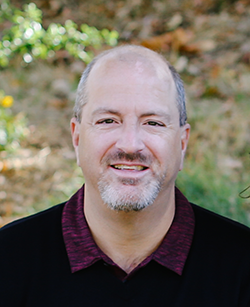 Tim Canham is a senior flight software at NASA’s Jet Propulsion Laboratory. He started his career at JPL writing software for the Deep Space network, and then transitioned to writing software for the Cassini spacecraft. He has since worked on flight projects like Curiosity and is the architect for the open-source flight software framework F Prime (https://nasa.github.io/fprime/) originating at JPL. Most recently, Tim was the Flight Sofware and Operations Lead for the Mars Ingenuity Helicopter, which continues operating more than a year after it was deployed. Tim has also been involved in a number of outreaches to university teams to help students learn and deploy flight software using F Prime. He is currently the Acting Avionics Lead for SRH (Sample Return Helicopter), a pair of helicopters that would assist SRL (Sample Return Lander) in the retrieval of the geologic samples gathered by the Perseverance Rover.
Tim Canham is a senior flight software at NASA’s Jet Propulsion Laboratory. He started his career at JPL writing software for the Deep Space network, and then transitioned to writing software for the Cassini spacecraft. He has since worked on flight projects like Curiosity and is the architect for the open-source flight software framework F Prime (https://nasa.github.io/fprime/) originating at JPL. Most recently, Tim was the Flight Sofware and Operations Lead for the Mars Ingenuity Helicopter, which continues operating more than a year after it was deployed. Tim has also been involved in a number of outreaches to university teams to help students learn and deploy flight software using F Prime. He is currently the Acting Avionics Lead for SRH (Sample Return Helicopter), a pair of helicopters that would assist SRL (Sample Return Lander) in the retrieval of the geologic samples gathered by the Perseverance Rover.
F´ A Flight Software and Embedded Systems Framework | F´
F´ (or F Prime) is a software framework for the rapid development and deployment of embedded systems and spaceflight applications. Originally developed at NASA’s Jet Propulsion Laboratory, F´ is open-source software that has been successfully deployed for several space applications.
Greg Dechaine
Greg is the Mission Systems Engineer and Project Manager for the Dione CubeSat mission. He also provides engineering and project management support for several other missions including HERMES Nemesis, and PetitSat. Greg has a Bachelors in Mechanical Engineering from West Virginia University with 15+ years of experience in the Defense and Aerospace industries.
Kerry Gonzales
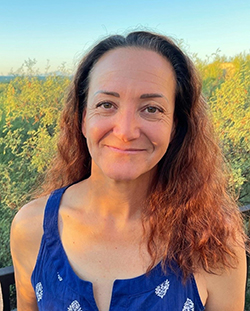 Kerry Gonzales is the Project Systems Engineer (PSE) for the Aspera mission (Pioneers) at the University of Arizona, Steward Observatory. Kerry has degrees in Mechanical Engineering and Engineering Management. Most of Kerry’s career has been spent working on large facility design and construction technical management for major optical astronomical observatories. Since joining the University of Arizona in 2018 Kerry has filled many roles in Technical Project Management, Mechanical Engineering, and Systems Engineering. Working with the Aspera team, Kerry is cutting her teeth in the fascinating world of space flight and enjoying every step. Kerry hopes she can share her experiences and the lessons she has learned thus far to benefit ongoing and future missions.
Kerry Gonzales is the Project Systems Engineer (PSE) for the Aspera mission (Pioneers) at the University of Arizona, Steward Observatory. Kerry has degrees in Mechanical Engineering and Engineering Management. Most of Kerry’s career has been spent working on large facility design and construction technical management for major optical astronomical observatories. Since joining the University of Arizona in 2018 Kerry has filled many roles in Technical Project Management, Mechanical Engineering, and Systems Engineering. Working with the Aspera team, Kerry is cutting her teeth in the fascinating world of space flight and enjoying every step. Kerry hopes she can share her experiences and the lessons she has learned thus far to benefit ongoing and future missions.
Daniel Kocevski
 Dr. Kocevski received his B.S. in astronomy from the University of Michigan and Ph.D. in astrophysics from Rice University. His research has focused on the gamma-ray observations of transients sources in the Universe, including gamma-ray bursts, supernovae, and active galactic nuclei. He spent 4 years supporting the Fermi Gamma-ray Space Telescope at Goddard Space Flight Center, where he led the development of several science analysis toolkits, including the Fermi All-Sky Variability Analysis. He moved to Marshall Space Flight Center in 2012 to support the science operation of the Gamma-ray Monitor onboard Fermi and contributed to the analysis of the first multimessenger observation of a binary neutron star merger in both electromagnetic and gravitational radiation in 2017. Dr. Kocevski’s StarBurst Multimessenger Pioneer concept was selected in 2021, being among the first of NASA’s Pioneer class missions. StarBurst is a highly sensitive and wide field gamma-ray monitor designed to increase the number of future multimessenger observation of relativistic transients in both electromagnetic and gravitational radiation.
Dr. Kocevski received his B.S. in astronomy from the University of Michigan and Ph.D. in astrophysics from Rice University. His research has focused on the gamma-ray observations of transients sources in the Universe, including gamma-ray bursts, supernovae, and active galactic nuclei. He spent 4 years supporting the Fermi Gamma-ray Space Telescope at Goddard Space Flight Center, where he led the development of several science analysis toolkits, including the Fermi All-Sky Variability Analysis. He moved to Marshall Space Flight Center in 2012 to support the science operation of the Gamma-ray Monitor onboard Fermi and contributed to the analysis of the first multimessenger observation of a binary neutron star merger in both electromagnetic and gravitational radiation in 2017. Dr. Kocevski’s StarBurst Multimessenger Pioneer concept was selected in 2021, being among the first of NASA’s Pioneer class missions. StarBurst is a highly sensitive and wide field gamma-ray monitor designed to increase the number of future multimessenger observation of relativistic transients in both electromagnetic and gravitational radiation.
Richard Kohnert
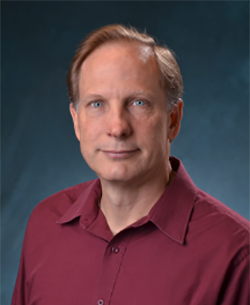 Mr. Kohnert has been employed at the Laboratory of Atmospheric and Space Physics (LASP) for 42 years, 3 years as a student and 39 years as a Professional Research Assistant. Over this period, he has had the privilege of supporting 36 NASA sounding rocket launches, 8 NASA flight projects including UARS, CASSINI, SDO, SORCE, the GOES-R series, Europa Clipper and 2 space shuttle missions. In 2018 he transitioned from supporting flight projects to establishing and managing the SmallSat Program at LASP.
Mr. Kohnert has been employed at the Laboratory of Atmospheric and Space Physics (LASP) for 42 years, 3 years as a student and 39 years as a Professional Research Assistant. Over this period, he has had the privilege of supporting 36 NASA sounding rocket launches, 8 NASA flight projects including UARS, CASSINI, SDO, SORCE, the GOES-R series, Europa Clipper and 2 space shuttle missions. In 2018 he transitioned from supporting flight projects to establishing and managing the SmallSat Program at LASP.
Jesse Leitner
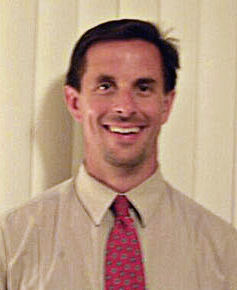 Jesse Leitner is the Chief Safety and Mission Assurance Engineer for NASA Goddard, responsible for the technical direction for NASA GSFC’s Directorate for Safety and Mission Assurance (SMA). In this role, he develops policies and procedures to ensure technical excellence and engineering integrity for SMA practices across GSFC; coordinates, recommends solutions for, and reports on problems and issues across the Center; and facilitates technical coordination for activities in engineering, SMA, and projects and programs at GSFC. He has previously served at GSFC as the chief engineer for the Mission Engineering and Systems Analysis division and as the GSFC lead for Distributed Space Systems. Before coming to GSFC he worked on space flight dynamics and control, control of large optical systems, and hyperspectral imaging modeling and simulation at the Air Force Phillips Lab and the Air Force Research Laboratory. He currently serves and has previously served on numerous standing review boards and independent review teams, and he has chaired national and international conferences in the areas of spacecraft guidance, navigation, and control, and formation flying. Jesse holds a PhD in Aerospace Engineering from Georgia Tech in the area of Flight Mechanics and Control, an MS in Aerospace Engineering from Georgia Tech as well, and a BS in Aerospace Engineering from The University of Texas at Austin.
Jesse Leitner is the Chief Safety and Mission Assurance Engineer for NASA Goddard, responsible for the technical direction for NASA GSFC’s Directorate for Safety and Mission Assurance (SMA). In this role, he develops policies and procedures to ensure technical excellence and engineering integrity for SMA practices across GSFC; coordinates, recommends solutions for, and reports on problems and issues across the Center; and facilitates technical coordination for activities in engineering, SMA, and projects and programs at GSFC. He has previously served at GSFC as the chief engineer for the Mission Engineering and Systems Analysis division and as the GSFC lead for Distributed Space Systems. Before coming to GSFC he worked on space flight dynamics and control, control of large optical systems, and hyperspectral imaging modeling and simulation at the Air Force Phillips Lab and the Air Force Research Laboratory. He currently serves and has previously served on numerous standing review boards and independent review teams, and he has chaired national and international conferences in the areas of spacecraft guidance, navigation, and control, and formation flying. Jesse holds a PhD in Aerospace Engineering from Georgia Tech in the area of Flight Mechanics and Control, an MS in Aerospace Engineering from Georgia Tech as well, and a BS in Aerospace Engineering from The University of Texas at Austin.
Jeff Levison
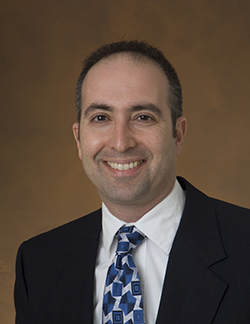 Jeff Levison has been with the Jet Propulsion Laboratory for over 30 years supporting NASA/JPL flight projects predominantly in software engineering, operations and management involving real-time embedded systems. He holds a Master of Engineering degree from Cornell University and a Bachelor of Science from Carnegie Mellon University. At JPL he is the Supervisor of the Small Scale Flight Software Group and manager of the open source F Prime Flight Software Product Line, overseeing its deployment on several internal JPL missions including the CubeSats ASTERIA, Lunar Flashlight, and Near Earth Asteroid Scout and the Ingenuity Mars Helicopter that accompanies the Perseverance Rover for the M2020 mission. Jeff has previously served as the Flight Software Deputy Project Element Manager for the Mars Science Laboratory mission sending the Curiosity rover to Mars, the lead Project Software Systems Engineer for the DAWN mission to asteroids Vesta and Ceres, and the Fault Protection Flight Software Development Lead and Flight Software Operations Lead for the Deep Impact Mission to comet Tempel 1.
Jeff Levison has been with the Jet Propulsion Laboratory for over 30 years supporting NASA/JPL flight projects predominantly in software engineering, operations and management involving real-time embedded systems. He holds a Master of Engineering degree from Cornell University and a Bachelor of Science from Carnegie Mellon University. At JPL he is the Supervisor of the Small Scale Flight Software Group and manager of the open source F Prime Flight Software Product Line, overseeing its deployment on several internal JPL missions including the CubeSats ASTERIA, Lunar Flashlight, and Near Earth Asteroid Scout and the Ingenuity Mars Helicopter that accompanies the Perseverance Rover for the M2020 mission. Jeff has previously served as the Flight Software Deputy Project Element Manager for the Mars Science Laboratory mission sending the Curiosity rover to Mars, the lead Project Software Systems Engineer for the DAWN mission to asteroids Vesta and Ceres, and the Fault Protection Flight Software Development Lead and Flight Software Operations Lead for the Deep Impact Mission to comet Tempel 1.
JC Liou
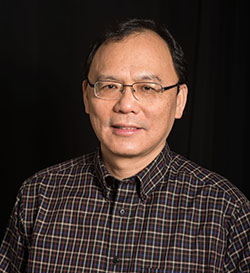 Dr. Jer Chyi “J.-C.” Liou is the Orbital Debris (OD) program manager and NASA’s chief scientist for OD in the OD Program Office (ODPO). In this role, he is responsible for interactions with other U.S. and international agencies and organizations, policy development, and NASA’s strategic plans for the OD environment, debris mitigation, risk assessments and spacecraft protection.
Dr. Jer Chyi “J.-C.” Liou is the Orbital Debris (OD) program manager and NASA’s chief scientist for OD in the OD Program Office (ODPO). In this role, he is responsible for interactions with other U.S. and international agencies and organizations, policy development, and NASA’s strategic plans for the OD environment, debris mitigation, risk assessments and spacecraft protection.
Liou first came to Johnson Space Center (JSC) in 1994 as a National Research Council post-doctoral research fellow working with the late Herbert Zook on interplanetary dust, asteroids and the Kuiper Belt dust disk. In 1997, he started his career in OD as a contractor supporting the program office and then as a project manager for a contractor OD team. He later held the position of section manager for contractor OD and Hypervelocity Impact Teams before joining the ODPO as a civil servant in 2008.
Liou led the development of NASA’s Orbital Debris Engineering Model, ORDEM2000, and the long-term OD evolutionary model, LEGEND. He has led several key NASA and international studies to investigate the instability of the OD population in LEO and to quantify the effectiveness of environment remediation options. In addition, he directed the ODPO development of new technologies for micrometeoroid and OD in-situ impact detection, including the DRAGONS system, and served as the principal investigator and co-investigator of Science Mission Directorate-funded sensor development projects. Currently, he is the lead for DebriSat, a project employing laboratory-based hypervelocity impact experiments to improve satellite breakup models and space situational awareness.
Liou has authored approximately 100 technical publications, including more than 40 papers in peer-reviewed journals. He was the technical editor for the NASA Orbital Debris Quarterly News from 2003 to 2014 and served as the chief technologist for the JSC ARES Directorate from 2009 to 2014.
Liou earned a Bachelor of Science degree in physics from the National Central University in Taiwan and a Master of Science degree and doctorate in astronomy from the University of Florida. He received several major awards from Lockheed Martin; Jacobs Technology Inc., Engineering and Science Contact Group, and ERC, Inc. between 2002 and 2006; the NASA astronaut’s Silver Snoopy award in 2003; the JSC Director’s Commendation award in 2011; and the NASA Exceptional Engineering Achievement Medal in 2012.
Alicia C. Mendoza-Hill (“Aly”)
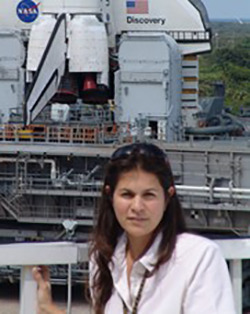 Aly Mendoza-Hill is a Program Executive in the Heliophysics Division of the NASA HQ Science Mission Directorate (SMD). Aly is currently the SMD Rideshare Lead where she leads the coordination of rideshare mission opportunities across all of SMD. Prior to SMD in 2019, Aly was a Mission Manager in the Flight Projects Office of the Launch Services Program (LSP) at NASA’s John F. Kennedy Space Center (KSC) in Florida. As the Mission Manager, Aly was the primary spacecraft customer interface, and she was responsible for managing the launch services, integration, and launch vehicle engineering aspects of the OCO-2, CYGNSS, InSight, DART, and GeoCarb missions. Prior to transferring to LSP in 2011, she was the NASA vehicle manager for the external tank and solid rocket boosters (SRB) within the Launch Vehicle Processing Directorate for the Space Shuttle Program at KSC. Aly was responsible for managing all NASA activities associated with the processing of the external tank, SRBs, and Mobile Launch Platforms at Kennedy for every space shuttle mission from 2007 through 2011. This included coordination of prelaunch operations, launch and recovery activities with the Kennedy management, Marshall Space Flight Center shuttle program elements, and NASA contractors. From 2003 to 2007, she served as a NASA vehicle processing engineer for the orbiters Discovery and Endeavour, as well as the external tank and solid rocket boosters. Aly joined NASA in 2000 as an industrial engineer in Space Shuttle Processing at KSC.
Aly Mendoza-Hill is a Program Executive in the Heliophysics Division of the NASA HQ Science Mission Directorate (SMD). Aly is currently the SMD Rideshare Lead where she leads the coordination of rideshare mission opportunities across all of SMD. Prior to SMD in 2019, Aly was a Mission Manager in the Flight Projects Office of the Launch Services Program (LSP) at NASA’s John F. Kennedy Space Center (KSC) in Florida. As the Mission Manager, Aly was the primary spacecraft customer interface, and she was responsible for managing the launch services, integration, and launch vehicle engineering aspects of the OCO-2, CYGNSS, InSight, DART, and GeoCarb missions. Prior to transferring to LSP in 2011, she was the NASA vehicle manager for the external tank and solid rocket boosters (SRB) within the Launch Vehicle Processing Directorate for the Space Shuttle Program at KSC. Aly was responsible for managing all NASA activities associated with the processing of the external tank, SRBs, and Mobile Launch Platforms at Kennedy for every space shuttle mission from 2007 through 2011. This included coordination of prelaunch operations, launch and recovery activities with the Kennedy management, Marshall Space Flight Center shuttle program elements, and NASA contractors. From 2003 to 2007, she served as a NASA vehicle processing engineer for the orbiters Discovery and Endeavour, as well as the external tank and solid rocket boosters. Aly joined NASA in 2000 as an industrial engineer in Space Shuttle Processing at KSC.
Anh Nguyen
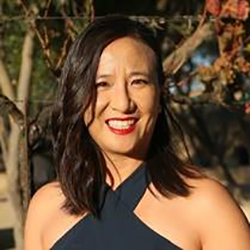 Anh Nguyen is currently the Payload Accelerator for CubeSat Endeavors (PACE) Project Manager and has worked on a variety of CubeSats during her career at NASA Ames Research Center over the past 6 years. She has a PhD in Aerospace Engineering from the University of Florida Precision Space Systems Lab with a focus in Dynamic Systems and Controls and is passionate in demonstrating new technologies for the next generation of small satellites.
Anh Nguyen is currently the Payload Accelerator for CubeSat Endeavors (PACE) Project Manager and has worked on a variety of CubeSats during her career at NASA Ames Research Center over the past 6 years. She has a PhD in Aerospace Engineering from the University of Florida Precision Space Systems Lab with a focus in Dynamic Systems and Controls and is passionate in demonstrating new technologies for the next generation of small satellites.
Christopher Ostrom
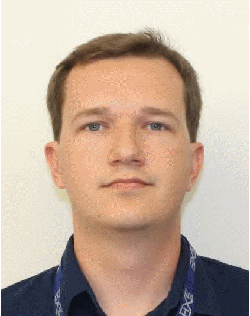 Chris Ostrom is an Orbital Debris Engineer at HX5, supporting the NASA Orbital Debris Program Office at Johnson Space Center. He has served for five years as the Orbital Debris Research & Science Operations Safety Lead, where he has guided development of new versions of the DAS and ORSAT software packages, evaluated orbital debris mitigation assessments, and provided risk analyses for human and robotic spaceflight missions. He continues to perform research into reentry physics, the statistics of ground casualty risk, and applying new statistical techniques to analyze radar sensor coverage in low Earth orbit.
Chris Ostrom is an Orbital Debris Engineer at HX5, supporting the NASA Orbital Debris Program Office at Johnson Space Center. He has served for five years as the Orbital Debris Research & Science Operations Safety Lead, where he has guided development of new versions of the DAS and ORSAT software packages, evaluated orbital debris mitigation assessments, and provided risk analyses for human and robotic spaceflight missions. He continues to perform research into reentry physics, the statistics of ground casualty risk, and applying new statistical techniques to analyze radar sensor coverage in low Earth orbit.
David Pierce
 Mr. David L. Pierce is the Director of NASA’s Goddard Space Flight Center’s (GSFC) Wallops Flight Facility (WFF) on Virginia’s Eastern Shore. As WFF Director, Mr. Pierce leads NASA’s suborbital scientific research using sounding rockets, scientific balloons, airborne science aircraft, small spacecraft, and the agency’s only owned and operated launch range. Wallops, as a multi-tenant/multi-user facility, is a one-of-a-kind, unique national asset. Together with its mission partners, such as Virginia Space and the Mid-Atlantic Regional Spaceport, Wallops is a leader in providing safe and cost-effective access to space to meet government and commercial sector needs for accessing flight regimes worldwide from the Earth’s surface to the Moon and beyond.
Mr. David L. Pierce is the Director of NASA’s Goddard Space Flight Center’s (GSFC) Wallops Flight Facility (WFF) on Virginia’s Eastern Shore. As WFF Director, Mr. Pierce leads NASA’s suborbital scientific research using sounding rockets, scientific balloons, airborne science aircraft, small spacecraft, and the agency’s only owned and operated launch range. Wallops, as a multi-tenant/multi-user facility, is a one-of-a-kind, unique national asset. Together with its mission partners, such as Virginia Space and the Mid-Atlantic Regional Spaceport, Wallops is a leader in providing safe and cost-effective access to space to meet government and commercial sector needs for accessing flight regimes worldwide from the Earth’s surface to the Moon and beyond.
Mr. Pierce has more than 37 years of project and program management experience at GSFC. Prior to his appointment in 2019 as Wallops’ director, Pierce served as deputy director for Institutions, Programs, and Business Management in the Science and Exploration Directorate (SED) at GSFC from 2016 to 2018, where he oversaw SED’s institutional, new business, technology, and business management functions. Between 2011 and 2016, Pierce served as the senior Program Executive for Suborbital Research in NASA’s Science Mission Directorate (SMD) at NASA Headquarters (HQ), overseeing implementation of SMD’s Suborbital Program, a broad portfolio of aircraft, scientific balloons, sounding rockets, and CubeSat research missions. He also previously served as the WFF Deputy Director from 2012 to 2014, assisting the WFF Director in the management of the directorate and its project/program elements.
Mr. Pierce served as NASA’s Balloon Program Office chief from 2004 to 2011, where he was responsible for overseeing the safe implementation of the balloon program, as well as the Columbia Scientific Balloon Facility (CSBF), located in Palestine, Texas. Pierce also served as Mission Manager within the Explorers Program from 1998 to 2004, managing the University-class Explorer (UNEX) and Small Explorer (SMEX) missions. He started at NASA working as an aerospace engineer in the GSFC/WFF Aircraft Programs Branch, modifying research aircraft to meet airborne science community needs and serving as mission manager on airborne science field campaigns.
Mr. Pierce earned his Bachelor’s degree in aerospace engineering from North Carolina State University in 1986, and his Master’s degree in mechanical engineering from the University of Virginia in 1994. He has received individual and group achievement awards throughout his career, and was awarded NASA’s Exceptional Service and Exceptional Achievement Medals.
Alan Rhodes
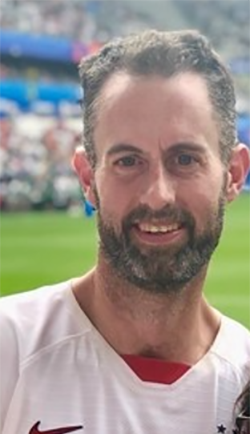 Alan Rhodes joined the Ames team in 2016 to manage science instrument development efforts for the largest airborne observatory in the world, NASA’s SOFIA program. He is currently the Lead Systems Engineer of NASA’s Advanced Composite Solar Sail System, (ACS3) that will demonstrate new deployable structures and materials technologies for solar sail propulsion systems. Alan has a breadth of experience leading teams from project inception to close-out and all steps between. Alan has led efforts across numerous industries including:
Alan Rhodes joined the Ames team in 2016 to manage science instrument development efforts for the largest airborne observatory in the world, NASA’s SOFIA program. He is currently the Lead Systems Engineer of NASA’s Advanced Composite Solar Sail System, (ACS3) that will demonstrate new deployable structures and materials technologies for solar sail propulsion systems. Alan has a breadth of experience leading teams from project inception to close-out and all steps between. Alan has led efforts across numerous industries including:
- Acting as test director / project manager for the first series of quarter and full scale Orion tests studying post-landing behavior to determine rescue and recovery requirements
- Leading the human in the loop test planning efforts for Orion
- Developing the lunar dust/regolith test and mitigation strategies for the Constellation Program
- Leading the NOAA Small Business Innovation Research (SBIR) Program
- Developing the procedures to allow power to be dynamically scheduled on the government owned electric power transmission system for the Bonneville Power Administration
- Leading the testing required to integrate foreign technology into the US ballistic missile and fast attack submarine fleet
Alan has a BS in Electrical Engineering, a BA in Spanish, and a MBA in Global Management. According to Mr. Rhodes’ vast expertise, the Portland Thorns and Timbers are the greatest football teams on Earth.
Robbie Robertson
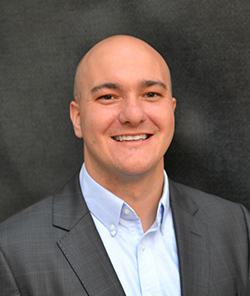 Robbie has over 13 years of experience developing space hardware and simulation tools. Robbie received his Ph.D. in Applied Physics and Space Engineering from Virginia Tech, where he led the mechanical design of space plasma instruments, developed the SOLAARS solar radiation pressure model, and installed space weather instruments on the Antarctic Plateau. Robbie has held research positions developing space system simulation tools at Los Alamos National Laboratory, Air Force Research Laboratory, and the German QUEST Institute and was previously the first employee and product development lead at Ibeos. At Sedaro, Robbie is responsible for leading various R&D efforts, creating and implementing the company’s business strategy, and communicating on behalf of our team.
Robbie has over 13 years of experience developing space hardware and simulation tools. Robbie received his Ph.D. in Applied Physics and Space Engineering from Virginia Tech, where he led the mechanical design of space plasma instruments, developed the SOLAARS solar radiation pressure model, and installed space weather instruments on the Antarctic Plateau. Robbie has held research positions developing space system simulation tools at Los Alamos National Laboratory, Air Force Research Laboratory, and the German QUEST Institute and was previously the first employee and product development lead at Ibeos. At Sedaro, Robbie is responsible for leading various R&D efforts, creating and implementing the company’s business strategy, and communicating on behalf of our team.
Michael Saing
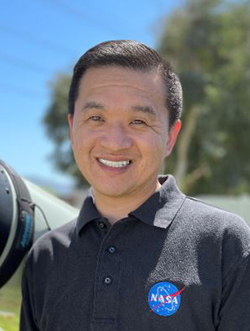 Michael is a Systems Engineer in the Project Systems Engineering and Formulation Section at the Jet Propulsion Laboratory (JPL). He is a member of the JPL Center for Small Sat Development (JCSSD) Office. He is a subject matter expert in space mission cost estimation and small satellites systems. He is the Cost Chair Lead and Deputy Systems Engineer for TeamX, TeamXc Small Sat, and Architecture A-Team. Michael has been involved with data collection and development of NASA’s SmallSat Cost Estimating Model tool called COMPACT since 2014. Michael is also a proposal reviewer at JPL and has also been tasked by NASA HQ to be on SRB. He graduated with a bachelors in Aerospace Engineering from CSU Long Beach. Started his early career work at the NASA Ames Research Center in Mountain View, CA prior to joining JPL. Outside of his professional career, he’s an amateur astronomer and interests are in the areas of exoplanets, astrophysics and heliophysics science, telescopes engineering, and astrophotography.
Michael is a Systems Engineer in the Project Systems Engineering and Formulation Section at the Jet Propulsion Laboratory (JPL). He is a member of the JPL Center for Small Sat Development (JCSSD) Office. He is a subject matter expert in space mission cost estimation and small satellites systems. He is the Cost Chair Lead and Deputy Systems Engineer for TeamX, TeamXc Small Sat, and Architecture A-Team. Michael has been involved with data collection and development of NASA’s SmallSat Cost Estimating Model tool called COMPACT since 2014. Michael is also a proposal reviewer at JPL and has also been tasked by NASA HQ to be on SRB. He graduated with a bachelors in Aerospace Engineering from CSU Long Beach. Started his early career work at the NASA Ames Research Center in Mountain View, CA prior to joining JPL. Outside of his professional career, he’s an amateur astronomer and interests are in the areas of exoplanets, astrophysics and heliophysics science, telescopes engineering, and astrophotography.
Luis Santos
BS Mechanical Engineering, 2006 from University of Puerto Rico, Mayaguez. Master’s Degree in Systems Engineering, 2014 from Old Dominion University. Started career as a mechanical design engineer for Composite Crew Module, Altair Lunar Lander and Global Precipitation Measurement Mission. Over 10 years of CubeSat/SmallSat experience including 4 SmallSat technology patents and several CubeSats as the Mission Systems Engineer.
Justin Treptow
 Justin Treptow currently serves as the deputy program executive for the Small Spacecraft Technology and Flight Opportunities programs within NASA’s Space Technology Mission Directorate. These programs seek to increase the pace of space exploration, discovery, and the expansion of space commerce though the rapid identification, development, and testing of capabilities that exploit agile spacecraft platforms and responsive launch capabilities from industry providers. Treptow previously held various positions in trajectory design, optimization, and analysis at the Launch Services Program, mission management for the CubeSat Launch Initiative, and a system’s engineer as a launch vehicle to spacecraft integration engineer for Class A missions as well as smallsats. Treptow is a graduate of the Florida Institute of Technology where he received a Bachelor of Science in Aerospace Engineering.
Justin Treptow currently serves as the deputy program executive for the Small Spacecraft Technology and Flight Opportunities programs within NASA’s Space Technology Mission Directorate. These programs seek to increase the pace of space exploration, discovery, and the expansion of space commerce though the rapid identification, development, and testing of capabilities that exploit agile spacecraft platforms and responsive launch capabilities from industry providers. Treptow previously held various positions in trajectory design, optimization, and analysis at the Launch Services Program, mission management for the CubeSat Launch Initiative, and a system’s engineer as a launch vehicle to spacecraft integration engineer for Class A missions as well as smallsats. Treptow is a graduate of the Florida Institute of Technology where he received a Bachelor of Science in Aerospace Engineering.










